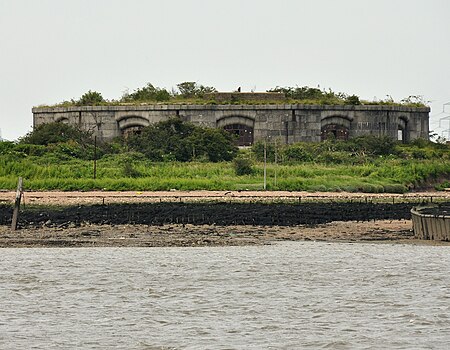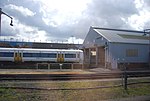Hoo Fort
Forts in MedwayPalmerston FortsUse British English from April 2018

Hoo Fort is a nineteenth-century military installation on the River Medway in Kent, England, that formed part of the defences of Chatham Naval Dockyard. Hoo Fort, like Fort Darnet 1 km (0.6 mi) downstream, was built on the recommendations of the 1859 Royal Commission. It is located on Hoo Island covering Pinup Reach, the inner navigable channel of the River Medway. Hoo Island sits to the south of the Hoo Peninsula and is within the parish of Hoo, Kent. The fort can be viewed from along the Saxon Shore Way, accessible from Vicarage Lane in Hoo.
Excerpt from the Wikipedia article Hoo Fort (License: CC BY-SA 3.0, Authors, Images).Hoo Fort
Copperhouse Lane,
Geographical coordinates (GPS) Address External links Nearby Places Show on map
Geographical coordinates (GPS)
| Latitude | Longitude |
|---|---|
| N 51.403333333333 ° | E 0.58138888888889 ° |
Address
Hoo Fort
Copperhouse Lane
ME7 2XS
England, United Kingdom
Open on Google Maps









